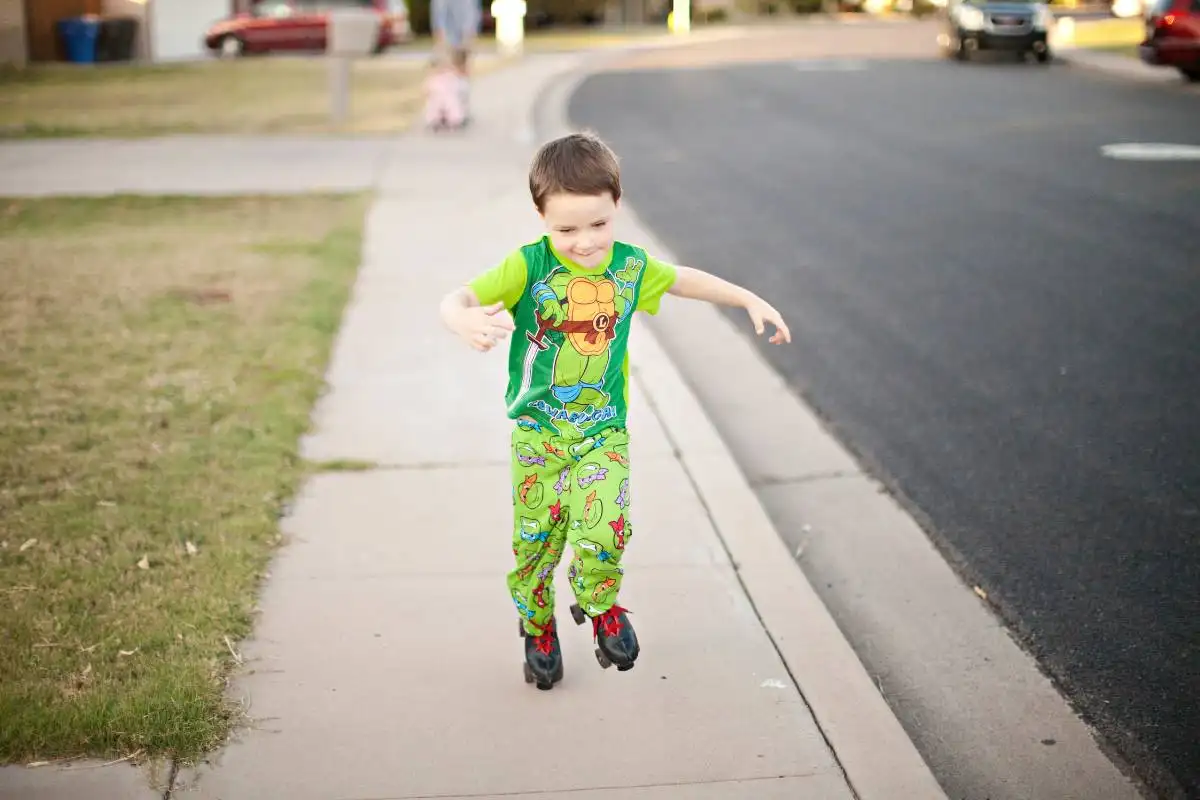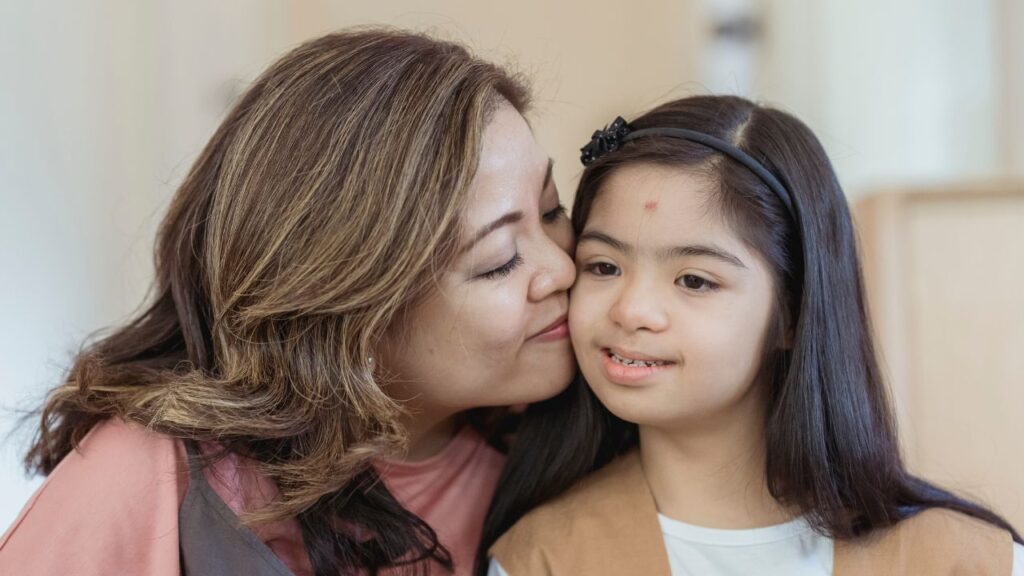One of the challenges that parents and caregivers of individuals with autism face is the risk of wandering. According to a study by the Interactive Autism Network, nearly half of children with autism tend to wander or bolt from a safe place. This can be a dangerous situation, as they may not be able to communicate their needs or find their way back home.
GPS trackers are a valuable tool for parents and caregivers of individuals with autism. They provide peace of mind and can help locate a loved one quickly in case of an emergency. GPS trackers come in different shapes and sizes, from wearable devices to small trackers that can be attached to a backpack or clothing.
Some GPS trackers for autism come with additional features, such as two-way calling, geofencing, and alerts for unusual activity. Geofencing allows parents and caregivers to set up a virtual boundary around a safe area, and receive an alert if the individual with autism leaves that area. This can be particularly useful for families who live near busy roads or bodies of water.
Why Autistic Individuals May Wander
Many autistic individuals, especially children, tend to wander or bolt unexpectedly. There are several reasons this behavior is common:
- Sensory overload – Loud noises, bright lights, crowds, and other sensory stimuli can be extremely overwhelming for autistic individuals. This may trigger a “flight” response to escape the unpleasant sensations.
- Difficulty understanding dangers – Some autistic children do not fully comprehend risks and consequences in the same way as neurotypical kids. They may not realize the hazards of wandering off alone.
- Affinity for certain places or stimuli – Autistic children can develop strong attachments to specific objects, routes, or locations that capture their interest. This can motivate them to seek out these favorite things.
- Communication difficulties – Many autistic kids have challenges expressing needs and desires through speech. Sudden wandering may be an attempt to communicate or fulfill a want nonverbally.
- General restlessness – Some children on the spectrum are naturally inclined to pace, run, explore, and move frequently. They may bolt or leave supervised areas due to restless energy.
Caregivers of autistic children who tend to wander should take precautions to protect their safety. GPS tracking devices are one option to help monitor their location.
Risks of Wandering
Wandering is a serious concern for children with autism. Unfortunately, it puts them at greater risk for:
- Accidents and injuries. Children who wander may accidentally walk into traffic or other unsafe areas. They are more likely to experience accidents compared to children who don’t wander.
- Abuse or exploitation. Predators may target wandering children if they are alone and vulnerable. Children with autism may have difficulty communicating what happened or identifying unsafe adults.
- Death or severe injury. Wandering near water, into traffic, or getting lost outdoors can lead to drowning, getting hit by vehicles, or death from exposure to the elements. Sadly, death by drowning is a leading cause of mortality among those with autism who wander.
The risks associated with wandering make it extremely dangerous for children on the spectrum. Caregivers need to take steps to prevent wandering behaviors whenever possible. Using a GPS tracking device can help keep children safe if they do happen to wander off.
Benefits of GPS Trackers
GPS trackers designed for autistic individuals who wander offer numerous benefits for both the person and their caregivers. Most importantly, they allow caregivers to quickly locate the individual if they do wander off.
This can be crucial for bringing the person to safety before they travel too far or encounter any dangerous situations. Knowing there is a GPS tracker in place provides immense peace of mind for parents and caregivers who otherwise would be constantly worried about their child wandering off.
GPS trackers also allow autistic individuals to have more independence. Caregivers may feel comfortable letting the person play in the backyard or walk to a nearby store if they have a tracker to monitor their location. This increased freedom can be very positive for the child’s development and self-esteem.
At the same time, caregivers can still maintain safety by being alerted if the individual travels too far or goes outside an established safe zone. Overall, a GPS tracker maximizes autonomy while minimizing risks.
Features to Look for in a GPS Tracker for Autism
When selecting a GPS tracker for an autistic child or adult, there are several key features to consider:
1. Accuracy and Range
The tracker should provide location data that is precise and accurate, especially when the individual is on the move. Look for trackers that use advanced GPS and cellular triangulation technology to pinpoint locations down to a few feet. The range or coverage area is also important – ideally, the tracker will work nationwide or even globally so you can locate your loved one if they wander far from home.
2. Battery Life
Since you don’t want the tracker to run out of power when your child needs it most, look for long battery life. Many devices last 2-5 days on a single charge, while others rely on rechargeable batteries that can go 1-2 weeks between charges. Waterproof trackers tend to have shorter battery life.
3. Water Resistance
For children who may play in the water or get caught in the rain, water resistance is a must. Look for trackers with IP67 or IP68 ratings that can withstand submersion for 30 minutes in 1-3 feet of water. This protects the device from failure if it gets wet.
4. Alert Settings
The best trackers allow caregivers to set geographic boundaries and receive alerts when the individual crosses them. This is crucial for safety. Other useful alerts include low battery, device removal, etc.
5. Ease of Use
An unintuitive device with a steep learning curve will only frustrate the user. Seek out trackers with simple operations, easy-to-use apps, and clear monitoring screens. The simpler, the better for many autistic individuals. Vibrating alerts or sounds can also help children respond to prompts to return safely.
Prioritizing these key features will lead to selecting a reliable, durable GPS tracker well-suited for the unique needs of autistic children and adults. With real-time location tracking and alerts, caregivers can have peace of mind knowing their loved one’s whereabouts and safety.
Considerations When Choosing a Tracker
Choosing the right GPS tracker for your child with autism requires considering several key factors:
Child’s Age and Abilities
The child’s age, size, and abilities are important considerations. If your child is still very young, look for a small, lightweight tracker that can attach to clothing or shoes. For older children, choose a device they can help operate and charge. Match the interface and features to your child’s abilities – if they can use a smartphone, consider a GPS tracking app.
Urban vs Rural Setting
Think about where your child spends their time. In busy cities, precise location tracking is crucial. For rural areas, a device with extended battery life and a good GPS range is more important.
Budget
GPS trackers range widely in price based on features. Basic GPS tags start under $50, while full-service options with live tracking can cost over $200. Set a reasonable budget that fits your needs.
Method of Attachment
How the tracker attaches to your child is key. Clipping to a belt loop or shoe, wearing as a wristband, or placing in a pocket are common options. Match this to your child’s preferences and abilities. Some devices have tamper-proof clasps as added security.
Tips for Introducing GPS Trackers to Individuals with Autism
Introducing a GPS tracker to an individual with autism can be a challenging task. It is important to take a thoughtful and sensitive approach to ensure a successful introduction. Here are some tips to keep in mind when introducing GPS trackers to individuals with autism:
1. Explain the Purpose of the GPS Tracker
Individuals with autism may not understand why they need to wear a GPS tracker. It is important to explain the purpose of the tracker in a way that they can understand. For example, you can explain that the tracker will help keep them safe by allowing their caregiver to know their location at all times.
2. Involve the Individual in the Process
It is important to involve the individual in the process of choosing and setting up the GPS tracker. This can help them feel more in control and comfortable with the device. You can show them different options and let them choose the one they prefer. You can also involve them in the setup process by letting them press the buttons or choose the settings.
3. Make the Tracker Comfortable to Wear
Individuals with autism may have sensory issues that make it difficult for them to wear certain types of devices. It is important to choose a tracker that is comfortable for them to wear. You can also try different attachment options, such as a wristband or belt clip, to find the one that works best for them.
4. Practice Using the Tracker
Before relying on the GPS tracker in an emergency, it is important to practice using it. You can have the individual wear the tracker while going on a walk or visiting a familiar location. This can help them get used to the device and understand how it works.
By following these tips, introducing a GPS tracker to an individual with autism can be a positive experience. It can help keep them safe and give their caregivers peace of mind.
Training the Child on Using the Tracker
Training the child to properly use a GPS tracking device is crucial for its effectiveness. Here are some tips:
- Make a game of wearing the tracker. Praise your child when they keep it on or remind them to put it back on after taking it off. You can add stickers or other decorations to make wearing it more fun.
- Set clear expectations around when the tracker needs to be worn – such as anytime they leave the house or yard. Use visual aids like picture charts if needed. Provide rewards for keeping it on during the required times.
- Reinforce and praise your child when they properly keep the tracker on without reminders. Point out how the tracker helps you keep them safe. Making the connection between the tracker and their safety will motivate them to use it consistently.
- Practice wearing the tracker at home first before trying it out in public. This allows your child to get comfortable having it on. Roleplay potential situations where they may want to remove it.
- Consider using social stories to explain how the tracker helps parents know where their child is. Read these stories together regularly to reinforce the importance of keeping the tracker on.
With consistent positive reinforcement and repetition, your child can learn to successfully wear their tracker device when needed. This provides invaluable peace of mind that they can be located if they wander off.
Best GPS Trackers for Autism
Parents of children with autism often worry about their child’s safety, especially when the child wanders off or gets lost. GPS trackers can provide peace of mind by helping parents locate their children quickly. Here are some of the best GPS trackers for autism:
Wearable GPS Devices
Wearable GPS devices are small, lightweight, and designed to be worn by the child. They are comfortable and easy to use. Some of the best wearable GPS devices for autism include:
- Brainwave Watch: Brainwave Watch is the ultimate GPS tracker for autistic kids, offering smart monitoring, easy setup, and a simple interface. With patented technology and a free trial, it’s the best choice for ensuring your child’s safety and peace of mind. Start Your Free Brainwave Watch Trial
- Trax Play: Trax Play is a GPS tracker that can be attached to the child’s clothing or backpack. It offers real-time tracking, geofencing, and an SOS button. It is also water-resistant and durable, making it ideal for active children.
Portable GPS Trackers
Portable GPS trackers are small and easy to carry. They can be attached to the child’s backpack or clothing. Some of the best portable GPS trackers for autism include:
- Family1st: Family1st is a portable GPS tracker that offers real-time tracking and geofencing. It also has a long battery life and can be easily attached to the child’s clothing or backpack.
- PAJ GPS: PAJ GPS is a portable GPS tracker that offers real-time tracking, geofencing, and an SOS button. It also has a long battery life and can be easily attached to the child’s clothing or backpack.
GPS Tracking Apps
GPS tracking apps are designed to be installed on the parent’s smartphone. They allow parents to track their child’s location in real-time. Some of the best GPS tracking apps for autism include:
- Life360: Life360 is a popular GPS tracking app that allows parents to track their child’s location in real-time. It also offers geofencing and location-sharing features.
- Find My Kids: Find My Kids is a GPS-tracking app that allows parents to track their child’s location in real-time. It also offers geofencing and location-sharing features.
By using one of these GPS trackers, parents can ensure that their child with autism is safe and secure.
Conclusion
The decision to use a GPS tracker for an autistic child is a deeply personal one that requires careful consideration of the risks and benefits. Parents naturally feel protective of their children, but also want to encourage independence whenever possible. Using a tracker can provide peace of mind about safety, while still allowing a child more freedom than constant supervision.
There is no one-size-fits-all approach to wandering prevention. The best trackers balance tracking capabilities with a design that won’t overwhelm the child. With training, a tracker can become a tool that gives both parent and child confidence. While challenging, granting a child independence appropriate for their abilities is a hopeful act that enables growth.
Though each family’s journey is unique, resources and support continue to improve. The future looks bright for helping autistic individuals thrive while living safely and independently within their communities. More than just protection, the ultimate goal is providing meaningful life experiences that nurture individual potential.










